From plastic-free packaging to energy-generating biopanels, algae is no longer just pond scum – it’s becoming the backbone of a new materials economy. Across the globe, a new generation of founders is harnessing seaweed, microalgae, and even invasive blooms to create biofilms, dyes, foams, leathers, and textiles that challenge the fossil-based status quo.
This list spotlights 28 visionary founders leading algae-based innovation today – blending marine science, material design, and scalable impact. Each profile includes what we love at Tocco: the projects, people, and planetary logic that make algae one of the most exciting material frontiers.
1. Adi Goldman- Co-Founder & CEO, Biotic (Israel)
Adi Goldman is the co-founder and CEO of Biotic, an Israeli startup reimagining plastics by harnessing macroalgae and microbes. Goldman, a serial entrepreneur with a background in chemistry, helped launch Biotic in 2020 to produce PHA bioplastic entirely from marine resources. Biotic’s process uses farmed seaweed as the carbon source to feed proprietary bacteria, which then produce PHB/V – a fully biodegradable polymer. Under Goldman’s leadership, Biotic’s vision is to hit cost parity with fossil plastics and enable a “zero-waste future”, where plastics are compostable and don’t compete with food agriculture. In 2022, she steered Biotic to a successful seed funding, aiming to build a pilot plant and scale production of their algae-fed bioplastic. Adi’s ability to bridge science and business has positioned Biotic as a rising star in the bio-manufacturing scene.
Highlight Projects:
- Seaweed to PHA Technology: Biotic’s patented fermentation process where seaweed biomass is converted by bacteria into PHA pellets. These pellets can be used to make packaging film, cutlery, or textile fibers. The entire process uses saltwater (no freshwater) and occurs in closed tanks, yielding a polymer that biodegrades in soil and marine environments
- Demo Products: Biotic has created prototype compostable bags and injection-molded items from its PHA, demonstrating similar functionality to polyethylene. They’ve showcased marine-biodegradation: a film sample disappearing in seawater in a few months.
- Licensing Model: Instead of building huge factories, Biotic plans to license its tech to plastics manufacturers worldwide, allowing localized production using regional seaweed. This strategy was crafted by Goldman to accelerate global impact.
What Tocco loves: Biotic’s approach feels like high-tech wizardry with a simple truth at heart: grow seaweed, feed it to microbes, out comes plastic. Goldman's team is basically brewing the future in steel tanks – a future where plastics are guilt-free and ephemeral.
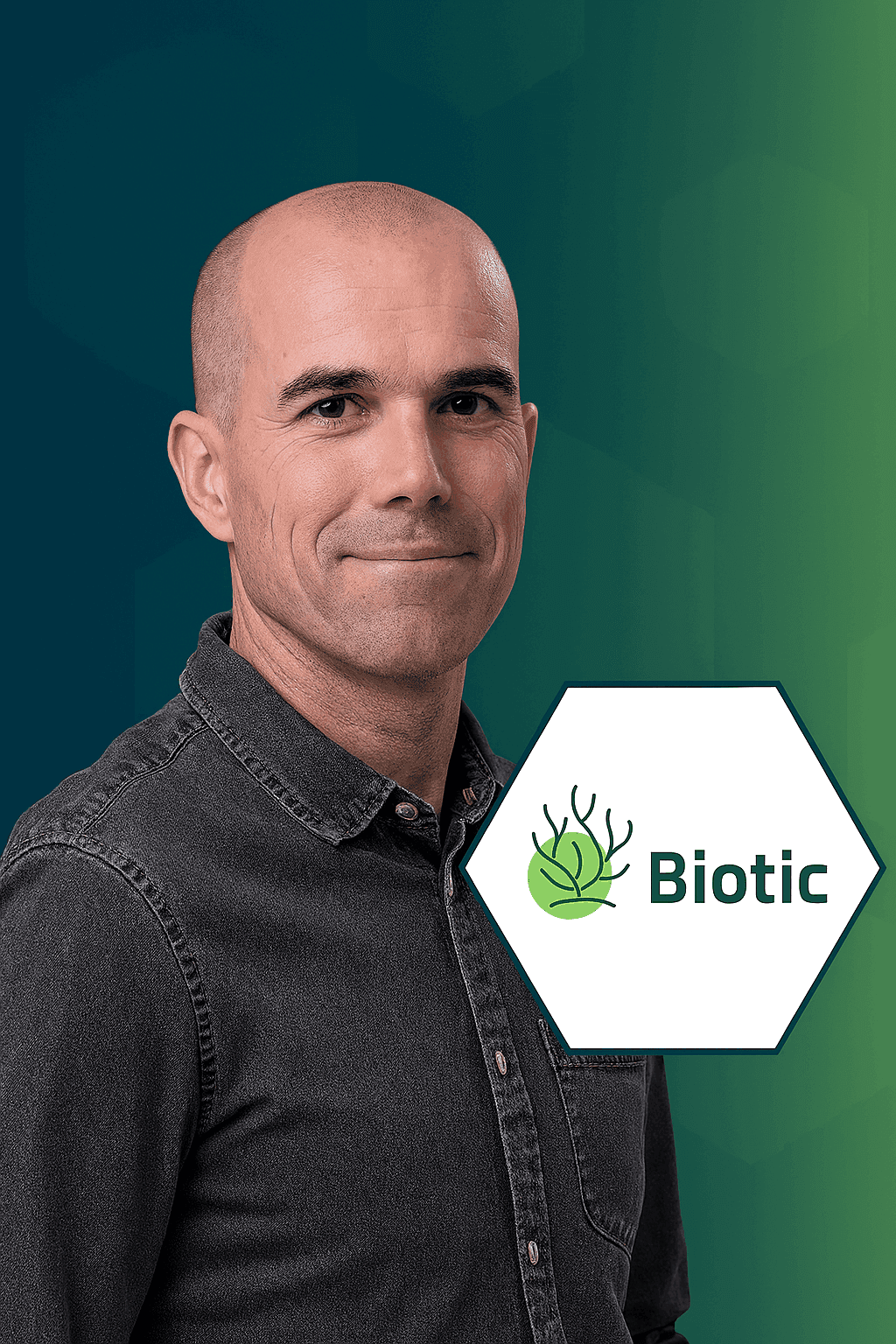
2. Adán Ramírez Sánchez- Co-Founder & CEO, Greenfluidics (Mexico)
Adán Ramírez Sánchez is the young biotechnologist behind Greenfluidics, a Mexican startup fusing algae with architecture. Founded in 2018 while Adán was in his early 20s, Greenfluidics develops “Intelligent Solar Biopanels” – wall panels filled with microalgae that generate clean energy, absorb CO₂, and function as building facades. Ramírez’s inspiration came from addressing both energy needs and carbon capture; by suspending algae in geometrically optimized, translucent panels, his system turns buildings into living, breathing organisms. As CEO, he led Greenfluidics through tech accelerators (like TechStars in 2023) and pilot installations. Ramírez is also an evangelist for youth innovation in climate tech, often speaking on how bioarchitecture can make cities more sustainable.
Highlight Projects:
- Intelligent Solar Biopanel: A triangular algae-filled panel that fits on building exteriors. The algae perform photosynthesis, generating biomass and oxygen, while embedded systems harvest electricity and heat. Each panel can produce ~328 kWh/m²/year and sequester carbon
- Biopanel Prototype Home: A concept project integrating dozens of algae panels into a small home façade, demonstrating natural cooling, power generation, and ambient lighting through glowing green algae.
- Carbon-Sequestering Billboard: A pilot billboard in Mexico City that utilized Greenfluidics panels to absorb pollution and showcase real-time data on CO₂ captured – blending advertising with environmental action.
What Tocco loves: Greenfluidics panels turn skyscrapers into algae forests – it’s sci-fi meets eco-reality. Picture a city skyline shimmering with green facades, each panel quietly gulping CO₂ and exhaling oxygen, all while powering the building within.
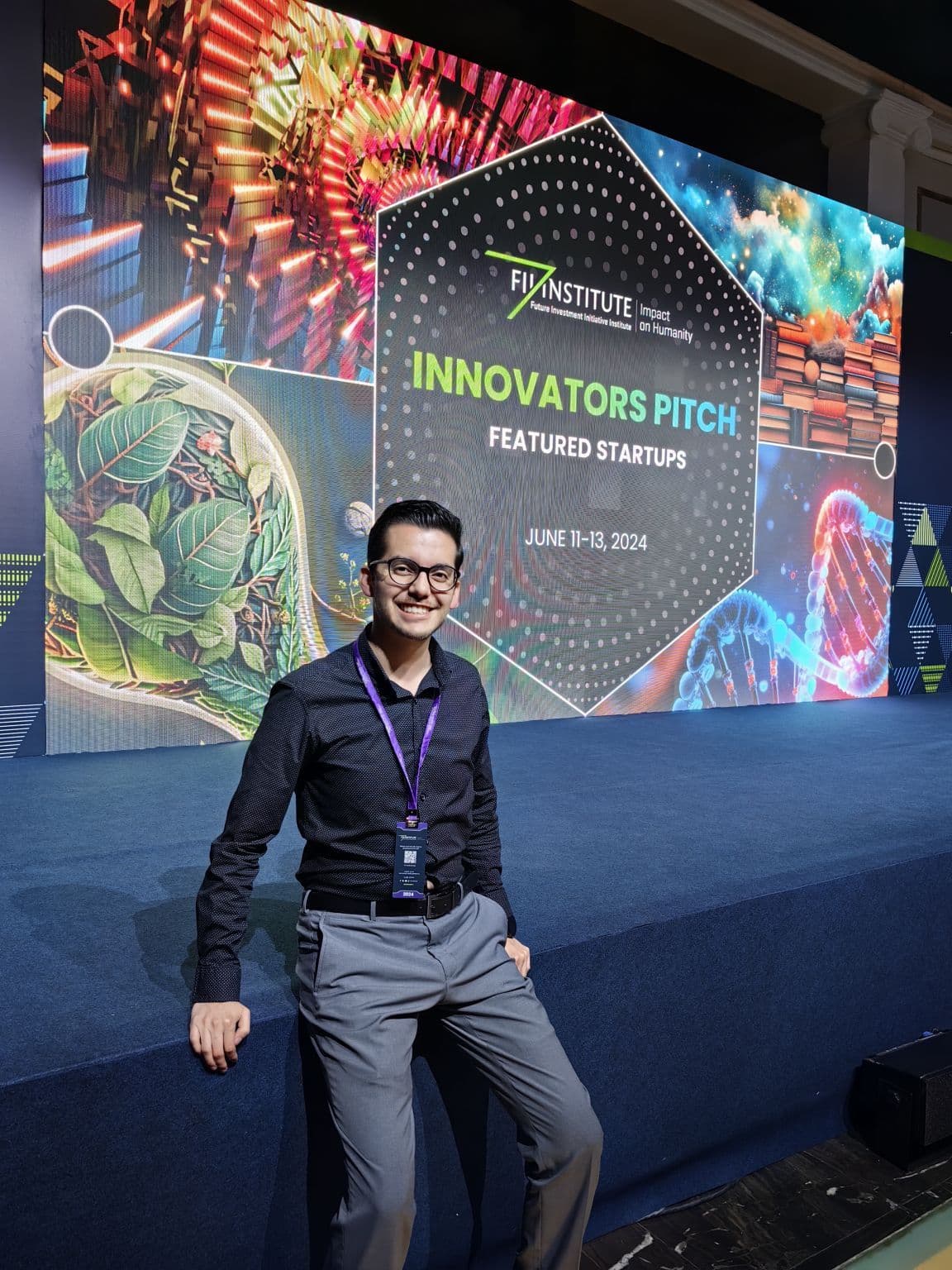
3. Carlo Fedeli, Co-Founder & CEO, FlexSea (UK)
Carlo Fedeli is the co-founder and CEO of FlexSea, a London-based startup engineering next-generation bioplastic films from seaweed. Fedeli, who has a background in material science from Imperial College, teamed up with Thibaut Monfort-Micheo in 2020 to launch FlexSea out of academic research. He leads a young, multidisciplinary team in developing a flexible seaweed-based polymer that can replace single-use plastics in packaging and agricultural films. Carlo often calls himself the “C(E)Ocean” – reflecting his hands-on role in both business and R&D, as well as a playful nod to their marine raw material. Under his guidance, FlexSea has achieved early breakthroughs in creating a film that is strong, transparent, and home-compostable, attracting attention (and funding) from sustainability investors.
Highlight Projects:
- FlexSea Film: A clear bioplastic film derived from brown seaweed that is heat-sealable and water-resistant, aimed at applications like produce bags, dry goods packaging, and stretch wrap. It breaks down in compost or soil within months, leaving no toxic residue.
- AgriMulch Sheets: Prototype seaweed mulch films for farming that can be plowed into soil after harvest instead of being picked up as plastic waste – they add organic matter as they degrade.
- Pelletized Biopolymer (FlexPel): FlexSea produces its material in pellet form for ease of use in existing plastic film extrusion equipment, facilitating adoption by manufacturers.
What Tocco loves: FlexSea’s material is as clear and flexible as the name suggests – it’s hard to believe such a smooth, strong film comes from slimy seaweed. Wrap a sandwich in it today, toss it in the compost tomorrow, and it’s as if Poseidon’s thin, green fingers were briefly holding your lunch together.
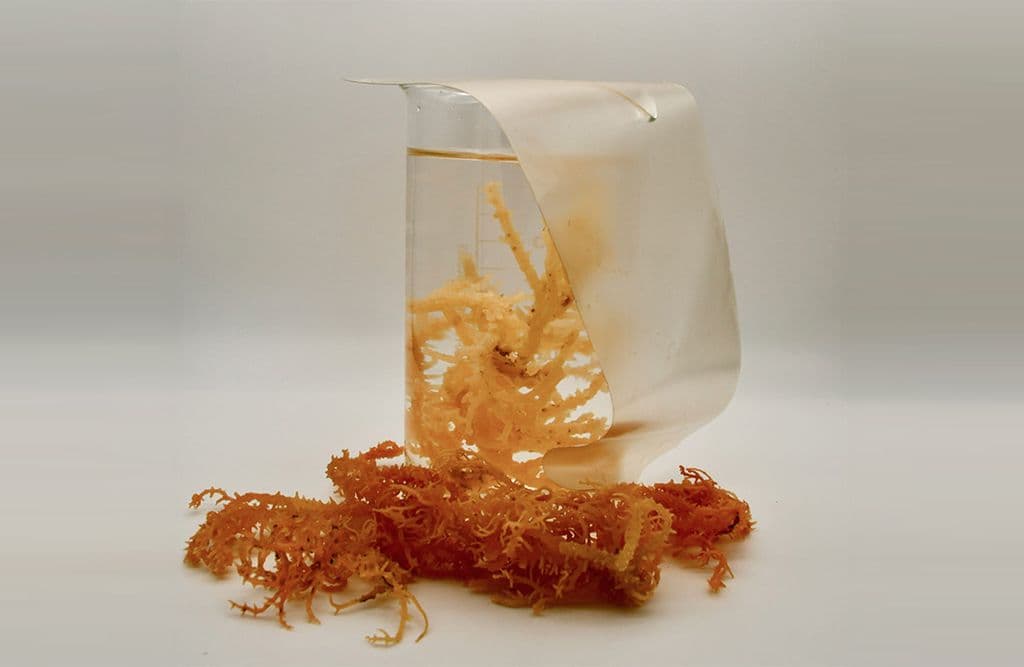
4. Chelsea Briganti- Co-Founder & CEO, Loliware (USA)
Chelsea “Sea” Briganti is an industrial designer-turned-entrepreneur behind Loliware, famed for its edible bioplastics. A graduate of Parsons School of Design, Briganti co-founded Loliware with Leigh Ann Tucker in 2015 to tackle single-use plastic waste by “eating it.” Their early product, a seaweed-based edible cup, gained wide attention (and even investment in Shark Tank). Now as CEO, Briganti has steered Loliware to focus on seaweed-derived drinking straws and utensils that biodegrade naturally. She envisions “hyper-compostable” materials made from kelp that mimic plastic’s utility but harmlessly disintegrates, channeling her background in product design into climate-tech innovation.
Highlight Projects:
- Edible Cups & Straws: World’s first edible drinking cup, followed by seaweed straws that replaced plastic straws at major venues (e.g. the Super Bowl).
- Blue Carbon Straw: A new line of kelp-based straws that are carbon-negative, absorbing CO₂ as the kelp grows.
- SEA Technology™: Loliware’s patented Seaweed Elastomer (SEA) material platform, adaptable to various single-use items.
What Tocco loves: Briganti’s ocean-grown straws and cups feel like magic – sip, then compost (or nibble) the evidence. It’s guilt-free indulgence in a waste-free future.

5. Claudia Pasquero- Co-Founder & Director, ecoLogicStudio (UK/Italy)
Claudia Pasquero is an architect, urban designer, and pioneer of algae architecture. In 2005 she co-founded ecoLogicStudio in London with Marco Poletto, and for the past decade she has become a leading voice in integrating living systems (like algae) into design. Pasquero’s work blends architecture, biology, and digital fabrication. She has designed futuristic installations and building facades that double as urban algae farms – purifying air, sequestering CO₂, and educating the public. Notable projects include the “Urban Algae Canopy”, a pavilion whose roof is a fluid-filled bioreactor cultivating spirulina, and PhotoSynthetica façade modules that were mounted on buildings to capture pollutants. As director of ecoLogicStudio and professor at University of Innsbruck, Pasquero is firmly at the vanguard of biophilic design. Her philosophy: cities can host “photosynthetic architecture” where building skins are alive and productive.
Highlight Projects:
- Urban Algae Canopy (EXPO 2015): A semi-transparent canopy of tubes circulating microalgae, which responded to sunlight and human movement. It produced oxygen equivalent to four hectares of woodland and edible spirulina for food during the exhibition.
- PhotoSynthetica Facade (Dublin & London, 2018): A series of algae bioreactor panels installed on building facades, each panel absorbing CO₂ and producing biomass. These striking, green-tinted panels demonstrated how algae can function as part of a building’s aesthetic and its HVAC system.
- H.O.R.T.U.S. (Garden of Knowledge): A living architecture experiment where algae and other microorganisms were grown in 3D-printed scaffolds, exploring a symbiosis of digital design and biological growth.
What Tocco loves: Pasquero’s creations are living sculptures – imagine walking under a canopy that dappled in green light as algae swirl above, or a building facade that literally breathes. She turns algae into an architectural material as expressive as glass or steel, but infinitely more alive.
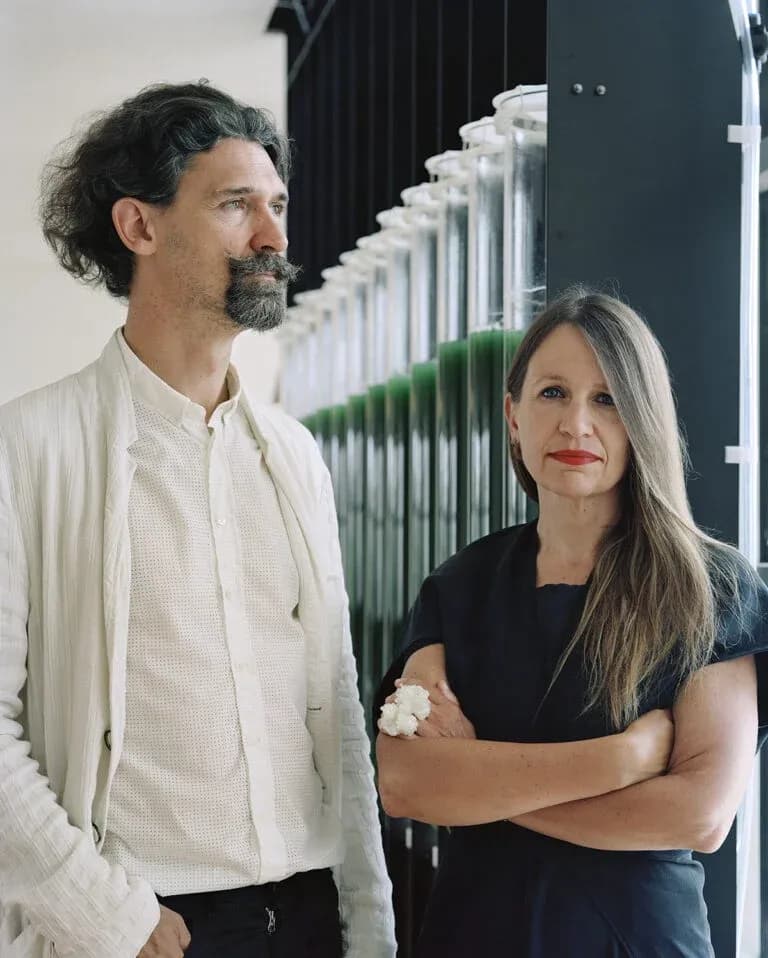
6. David Christian- Co-Founder & CEO, Evoware (Indonesia)
At just 23, David Christian co-founded Evoware (in 2016) to tackle Indonesia’s plastic waste crisis with seaweed solutions. Born and raised in Jakarta, Christian witnessed plastic pollution in both city and sea, which led him to tap into Indonesia’s abundant seaweed as a raw material. Evoware’s flagship product is a biodegradable seaweed-based film used for food packaging and edible sachets. Under Christian’s leadership as CEO, the startup gained global attention with its Ello Jello edible cup and later seaweed burger wrap, which customers can safely eat or compost. Christian – a Forbes 30 Under 30 Asia honoree– emphasizes empowering coastal seaweed farming communities through Evoware’s supply chain, marrying environmental and social impact.
Highlight Projects:
- Ello Jello Edible Cup: A cup made from seaweed gel, available in fruity flavors – it biodegrades in weeks or can be eaten after use.
- Seaweed Food Wraps: Odorless, tasteless packets for seasoning, coffee, or noodles that dissolve in hot water, eliminating packaging waste (piloted with instant noodle companies).
- Bio-Plastic Sachets: Seaweed film sachets for non-food items like soap or detergent – a substitute for single-use plastic packets, tested in hotel amenities.
What Tocco loves: Evoware turns Southeast Asia’s seaweed bounty into whimsical packaging you can eat. A flavored cup you can snack on after drinking is the kind of solution that makes us smile – and Mother Earth too.

7. David Crinnion- Co-Founder & CEO, Algotek (USA)
David Crinnion is the co-founder of AlgoTeK, a startup he formed with fellow University of Oregon students to create a dissolvable algae-based plastic. Crinnion, who studied product design, began the project in 2017 as a college senior concerned with plastic waste. By using brown algae (kelp) as the base, he and his friends developed a film that behaves like plastic but dissolves in water in minutes – and is even technically edible. As CEO, Crinnion became known for ending pitch meetings by eating a piece of his algae plastic, dramatically proving its safety. AlgoTeK’s material is aimed at packaging that doesn’t need to last long: think single-use wrappers, shopping bags, or polybags that can vanish into water or compost quickly. Still early-stage, Crinnion has led AlgoTeK through prototyping and local pilot tests, garnering press for this almost magic-like solution to plastic pollution.
Highlight Projects:
- Dissolvable Algae Plastic: A thin film made from kelp extract and other plant ingredients that can hold water or goods like a normal plastic bag but will completely dissolve in warm water in under 60 seconds. Demonstrated with a plastic cup prototype that disappears in a mug of hot water.
- Edible Drink Pouch: Concept development of a small algae-plastic pouch for single servings of beverage (like a juice or energy gel) that one could consume whole – package and all – or dissolve in water to release the drink.
- Agile Prototyping: The team’s ongoing experiments blending different algae species and natural additives to tweak the material’s strength and dissolution rate, aiming to meet use-cases from grocery bags (which might need to hold load for hours) to instant-dissolve detergent pods.
What Tocco loves: Crinnion’s algae plastic is like a sci-fi party trick with world-saving potential: imagine dropping a used shopping bag in water and watching it melt into nothing – or better yet, into something you could safely sip. It’s packaging that vanishes on command, leaving behind only a smile.

8. Elliot Roth- Founder, Spira Inc. (USA)
Elliot Roth is a biohacker-entrepreneur who founded Spira to tap algae’s potential for disrupting supply chains. Roth started Spira in 2017 after experimenting with spirulina algae in a DIY synthetic biology community. Based in Los Angeles, Spira began by developing genetically engineered spirulina strains to produce natural pigments as replacements for artificial food dyes. Under Roth’s leadership, Spira has since expanded to create carbon-negative materials from algae, ranging from food colorants to cosmetic ingredients and polymer precursors. A prolific communicator, Roth often speaks about algae as a platform technology – pointing out that these tiny organisms can be tweaked to output a variety of useful compounds, thereby replacing petroleum or animal-derived ingredients. Spira’s ethos of open-source biotech and bold experimentation reflects Roth’s unconventional background (he is largely self-taught in biology, coming from a design and engineering mix).
Highlight Projects:
- Spirulina Pigments (LyfeInk): Vibrant blue and yellow pigments derived from engineered spirulina, intended as drop-in replacements for synthetic FD&C food dyes and textile dyes.
- Algiknit Collaboration: Early work with AlgiKnit (now Keel Labs) providing spirulina biomass that could be incorporated into fibers or dyes – demonstrating algae’s cross-disciplinary utility.
- Algae Bioplastic Prototypes: Spira’s lab has showcased prototype algae-based films and foams (for packaging and insulation) made from whole algae biomass combined with other biopolymers, hinting at future products.
What Tocco loves: Roth sees algae as a paint box and toolkit for the future – need a color, a chemical, a material? Just program an algae. Spira’s work is as much art as science: turquoise spirulina smoothies one day, algae polymer prototypes the next, all underpinned by a hacker’s inventiveness.
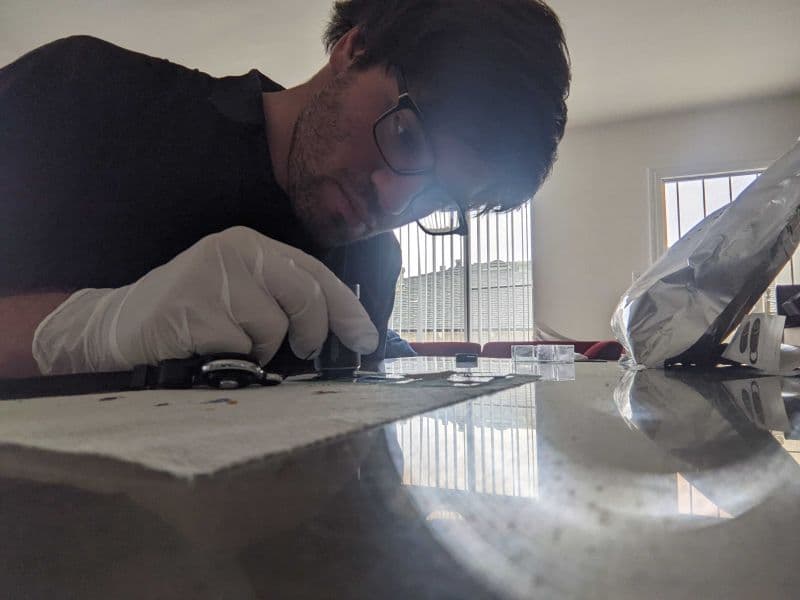
9. Geoff Chapin- Co-Founder & CEO, Carbonwave (USA)
Geoff Chapin is the co-founder and CEO of Carbonwave, a startup at the forefront of developing advanced biomaterials from tropical seaweed (specifically Sargassum). An experienced social entrepreneur, Chapin helped launch Carbonwave (originally C-Combinator) in 2020 after seeing massive sargassum seaweed rafts in the Caribbean and Gulf of Mexico as an opportunity rather than a nuisance. Under his leadership, Carbonwave has become the world’s leading developer of ultra-regenerative, plant-based biomaterials from seaweed. They have developed everything from a seaweed-based cosmetic emulsifier (a replacement for petroleum ingredients in cosmetics) to prototypes of flexible foams and leathers made from seaweed. Chapin’s strategy focuses on high-value products that can economically support the large-scale harvesting of sargassum – thus cleaning beaches and waters while creating sustainable materials. With operations in Puerto Rico and Mexico, he has navigated Carbonwave to raise multi-million dollar funding and scale up production.
Highlight Projects:
- SeaBalance™ 2000: A cosmetic emulsifier made from seaweed polysaccharides, launched as Carbonwave’s first product. It is used in lotions and creams in place of synthetic polymers, prized for its performance and biodegradability.
- Seaweed Faux Leather: Carbonwave has developed a leather-like material from sargassum that is flexible and durable. Still in R&D, it has garnered interest as a luxury sustainable leather alternative for fashion, potentially with a much lower footprint than animal or plastic leather.
- Polyurethane Foams: In partnership with material companies, Carbonwave is formulating bio-foams using seaweed polyols – aiming at applications like cushioning or even surfboard cores, taking algae materials into realms requiring both strength and lightness.
What Tocco loves: Carbonwave is surfing the brown tide to a better future. Chapin’s team sees stinking sargassum mats and imagines high-end skincare, vegan leather car seats, and foam sneakers. It’s a grand transmutation – Caribbean seaweed into gold – guided by an ethos that our most nettlesome wastes can become our richest resources.
10. Guy Maurice- Co-Founder & “SeaEO”, B’ZEOS (Norway)
Guy Maurice is the co-founder and CEO (humorously dubbed “SeaEO”) of B’ZEOS, an Oslo-based startup unlocking seaweed’s power for sustainable packaging. With a background working on waste issues in Africa and Panama, Maurice witnessed the global plastics problem and in 2018 set out to create packaging that “follows the life cycle of the food it protects”. B’ZEOS (a play on *“bio” and “Zeo” for zero-waste) uses brown kelp to make fully compostable bioplastic pellets that can be turned into films and containers. Maurice’s philosophy is deeply circular: the packaging should degrade as quickly as the food it contains. Under his leadership, B’ZEOS has partnered with major food companies to co-develop seaweed-based packaging, leveraging Norway’s push to scale seaweed farming and bioproducts.
Highlight Projects:
- Seaweed Thermoplastic Pellets: B’ZEOS creates base resin pellets from cultivated kelp, which can be used in standard plastic manufacturing lines (film extrusion, injection molding) to make items like wrappers or fork handles. The resulting bioplastic is home-compostable and even marine-biodegradable.
- Fresh Produce Film: A breathable seaweed-based film designed to wrap fruits and vegetables, extending shelf-life without trapping excess moisture. Pilot tested on cucumbers and bananas with a supermarket chain.
- Corporate Collaborations: Notably worked with Nestlé on a trial to replace single-use plastic wrappers with B’ZEOS material, and participating in packaging innovation challenges run by consumer goods giants.
What Tocco loves: Maurice’s packaging is in sync with nature’s rhythms – the wrap on your sandwich decays as gracefully as a fallen leaf. B’ZEOS isn’t just replacing plastic, it’s teaching packaging to live and die like an organic thing.

11. Jessica Giannotti- Founder & CEO, SeaDyes (Scotland)
Marine scientist Jessica Giannotti founded SeaDyes in 2023 to bring an ocean-friendly palette to the textile industry. Based on Scotland’s west coast, SeaDyes builds on Giannotti’s decade of work merging art and marine science (she earlier founded Crùbag, a textile design studio inspired by ocean life). SeaDyes focuses on extracting vibrant pigments from locally farmed seaweed and formulating them into natural dyes for fabrics. Starting with a brilliant magenta hue derived from a Scottish seaweed species, Giannotti has demonstrated the use of algae dyes on cotton, wool, and cellulose fibers. As an advocate of circular, regenerative practices, she emphasizes that garments dyed with algae can biodegrade safely, returning nutrients to nature. Giannotti’s unique mix of creative design and scientific rigor propels SeaDyes as a pioneer in biotechnology for fashion.
Highlight Projects:
- Magenta Seaweed Dye: A bold pink-purple dye extracted from Scottish seaweed, tested on cashmere and cotton.
- Full Spectrum Development: R&D to derive a rainbow of algae-based colors – from golden browns with kelp to deep greens with spirulina – aiming to replace petrochemical dyes across the spectrum.
- Industry Pilots: Collaborations with a luxury Scottish cashmere brand to trial algae-dyed yarns, and with IBioIC to scale production for commercial dyehouses.
What Tocco loves: SeaDyes’s pigments look like they were pulled from a tidal rainbow – imagine kelp-silk scarves tinted in sunset orange and raspberry red, colors as enchanting and ephemeral as a shoreline sunset.
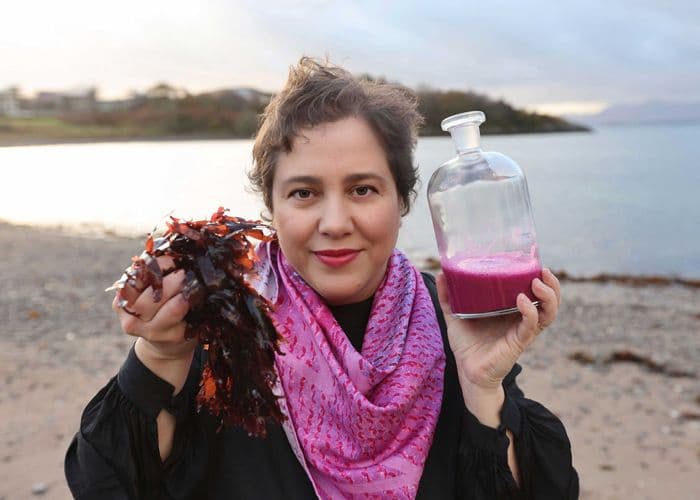
12. Johanan Dujon- Founder & CEO, Altfibr (St. Lucia)
Johanan Dujon is a Caribbean biotech entrepreneur known as “the sargassum guy” for tackling invasive seaweed. He founded St. Lucia-based Algas Organics in 2014 to convert sargassum seaweed washing up on Caribbean shores into fertilizer. Building on that success, in 2024 Dujon launched ALTFIBR (an Algas Organics spin-out) to create non-wood fiber from seaweed and other agri-wastes. As CEO of ALTFIBR, Dujon is rewriting how the world sources pulp for paper, packaging, and textiles – aiming to curb deforestation by supplying fibers from fast-growing alternatives like algae. Forbes 30 Under 30-ranked and brimming with practical optimism, Dujon has secured partnerships with universities (e.g., Georgia Tech) to refine his process. His approach is refreshingly pragmatic: he’s integrating into existing paper mills, offering a drop-in sustainable fiber that performs on par with wood pulp. Dujon’s journey from island farmer to global innovator reflects his tenacity and deep commitment to both environment and community.
Highlight Projects:
- Seaweed Pulp (Altfibr Pulp): Production of cellulose pulp from sargassum seaweed, which can be used in paper and packaging. It has been tested as a replacement for wood-based kraft pulp, showing competitive strength and brightness.
- Fiber Blends: Combining seaweed cellulose with other waste fibers (e.g., banana stems, pineapple leaves to create composite fibers tailored for different uses – from softer fibers for tissue paper to stronger fibers for corrugated cardboard.
- Pilot Paper Line: ALTFIBR is conducting trials with a paper mill to produce the world’s first seaweed paper sheets in volume, as well as marine-algae corrugated board, demonstrating seamless integration with existing machinery.
What Tocco loves: Dujon takes what others see as beach trash – mounds of rotting seaweed – and transforms it into golden fiber. The prospect of seaweed-based paper and packaging is as sweet as a Caribbean breeze: it carries the scent of innovation and a future where our everyday paper goods have roots in the ocean.

13. Julia Marsh- Co-Founder & CEO, Sway (USA)
Julia Marsh co-founded Sway in 2018 with a clear vision: transform seaweed into a vibrant replacement for thin-film plastics. With a background in design and brand strategy, Marsh witnessed the plastics problem firsthand and turned to giant kelp as a solution. Under her leadership, California-based Sway has developed a seaweed-derived biopolymer film for packaging that is home-compostable and marine-safe. Marsh’s storytelling flair (honed during her design career) shines through Sway’s colorful prototypes, which showcase algae’s potential in hues from amber to emerald. She often notes that seaweeds can replace petroleum in plastics while restoring ocean ecosystems – a narrative that helped Sway clinch major prizes and partnerships.
Highlight Projects:
- Seaweed Polybags: Flexible packaging films made from kelp, designed to biodegrade fully in compost or ocean water. Sway’s tinted sample bags have attracted interest from fashion retailers.
- Compostable Grocery Bags: A prototype shopping bag that won over judges by dissolving harmlessly in warm water after use (a party trick that underscores its biodegradability).
- Regenerative Seaweed Sourcing: Sway partners with sustainable kelp farms on the Pacific coast, ensuring their raw material sequesters carbon and supports marine biodiversity.
What Tocco loves: Sway’s kelp-based films come in a rainbow of ocean hues, shimmering like sea glass – and when you’re done, they vanish like a wave receding into the sand.

14. Karen Scofield Seal- Co-Founder & CEO, Oceanium (UK)
Karen Scofield Seal is the co-founder and CEO of OCEANIUM, a Scottish startup founded in 2018 with a mission to “kelp the world” by unlocking the power of sustainably farmed seaweed. With more than 25 years of experience in strategic marketing and a passion for ocean health, Karen partnered with scientist Dr. Charlie Bavington to co-found OCEANIUM after discovering seaweed’s extraordinary potential.
OCEANIUM develops cutting-edge, functional seaweed-based ingredients for food, health, and materials, driving systemic change for People Health and Ocean Health. Using proprietary green biorefinery technology, the company extracts maximum value from seaweed with zero-waste outputs.
Highlight Innovations:
- Developed OCEAN ACTIVES® H+, a clinically proven prebiotic ingredient designed to support gut health and enhance microbiome balance.
- Created OCEAN ACTIVES® C+, a bioactive skincare ingredient clinically shown to reduce redness and deeply nourish the skin.
Under Karen’s leadership, OCEANIUM has successfully scaled its green processing technology and built a platform for positive environmental impact. She is also a global advocate for building a Western seaweed farming industry, speaking at the World Economic Forum, Davos, and other international forums about the climate, biodiversity, and economic benefits of regenerative ocean farming.
What Tocco loves: OCEANIUM provides traceable, sustainably sourced seaweed ingredients that help companies meet UN Sustainable Development Goals (SDGs) and rising consumer demand for planet-friendly solutions by promoting demand for seaweed, a fast-growing, low-input, regenerative crop.
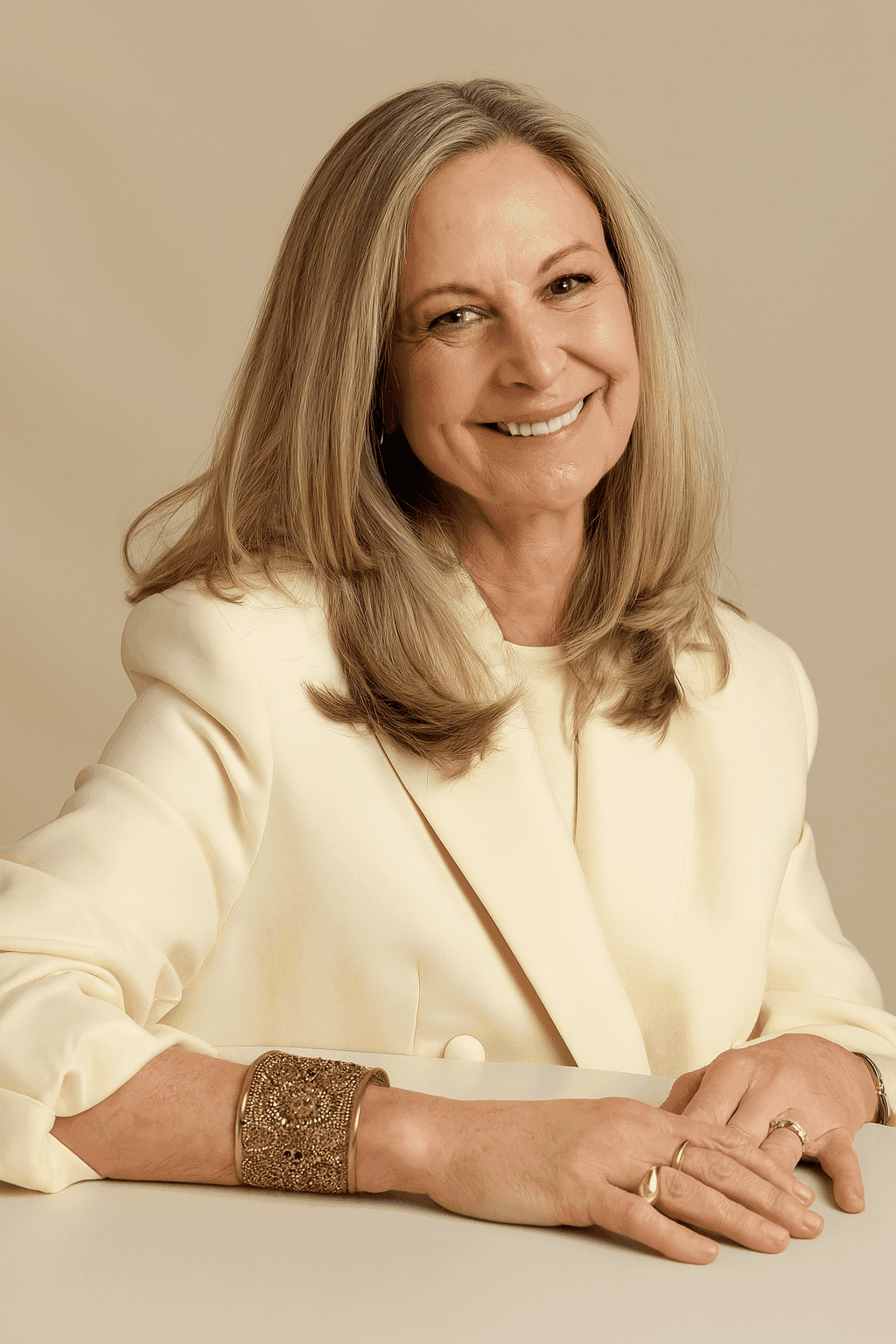
15. Natalie York- Founder & CEO, Flora Materials (USA)
Natalie York is the founder of Flora Materials, a Colorado-based biomaterials startup developing algae-derived construction materials. An architect by training (and co-founder of an architecture firm), York started Flora Materials in 2023 after a proof-of-concept showed that algae could replace fossil-based PVC in flooring tiles. As a woman founder in a traditionally male-dominated construction tech space, she’s garnered attention for her leadership and vision. Flora Materials has created a proprietary algae polyurethane composite that can be made into flooring tiles and potentially other building components. Under York’s guidance, the company won a U.S. Army SBIR contract to further develop these materials for durable, low-carbon buildings. York emphasizes that construction materials should be both high-performing and planet-positive – and she’s proving it’s possible with algae, one tile at a time.
Highlight Projects:
- Algae Flooring Tile: A prototype luxury vinyl tile (LVT) alternative made with Flora’s algae-based polymer instead of PVC. It looks and performs like conventional flooring – resilient, water-proof, aesthetically customizable – but avoids chlorine and plasticizers, and has a lower carbon footprint.
- Bio-based Resin Systems: Development of algae polyurethane resins that could be used as adhesives, sealants, or coatings in construction. These resins aim to cut out toxic isocyanates and fossil polyols by using algae oils and proteins.
- 3D-Printed Algae Composites: Experimenting with 3D printing techniques to create wall panels or bricks from algae materials, demonstrating versatility in both cast sheet goods and free-form fabrication.
What Tocco loves: York is literally building with algae – and the results are surprisingly chic. Think of a sleek, hardwood-look floor tile that, unbeknownst to the touch, started life as microscopic algae. Flora’s materials bring a touch of the wild green ocean into our living rooms, under our very feet.

16. Neha Jain- Founder & CEO, Zerocircle (India)
Neha Jain is the founder of Zerocircle, one of India’s most promising biomaterial startups, creating wildlife-safe packaging from seaweed. A former Google engineer, Jain quit her tech job to address plastic pollution and launched Zerocircle in 2020. Her company uses locally cultivated seaweed to produce films and packaging materials that safely biodegrade in natural environments – even if they end up in the ocean, they cause no harm to marine life. Based in Gurgaon, Zerocircle emphasizes solutions tailored to India’s waste infrastructure: materials that compost quickly and even break down in open dumps or waterways. Under Jain’s leadership, Zerocircle has developed prototypes like translucent seaweed bags and pouches, and garnered international attention by reaching the finals of the Tom Ford Plastic Prize. Jain’s methodical yet passionate approach reflects her dual background in engineering and her personal love for the ocean (she’s an avid scuba diver).
Highlight Projects:
- Thin-Film Seaweed Packaging: Zerocircle’s key product is a flexible film made from Indian ocean seaweed (such as gracilaria). It is clear, printable, heat-sealable, and dissolves into non-toxic biomass in marine or soil conditions within a few months. Ideal for packaging like garment polybags, dry food wrappers, or magazine polywraps.
- Thermoformed Containers: R&D into using seaweed biopolymer sheets for making trays or lids via thermoforming, targeting replacements for take-out food containers and disposable plates.
- Seaweed Supply Chain in India: Jain has established partnerships with coastal communities and seaweed farmers in Tamil Nadu and Gujarat, promoting sustainable farming of seaweed to both empower local economies and ensure a steady raw material supply.
What Tocco loves: Zerocircle’s film is so gentle you could feed it to the fishes – literally. Jain’s seaweed packaging melts away like a dream, leaving no trace except perhaps a satisfied turtle. In a country battling plastic-choked waterways, her work offers a breath of fresh, ocean-scented air.

17. Neil Morris- Co-Founder, Kelpi (UK)
Neil Morris is the co-founder and former CEO of Kelpi, a British startup creating marine-safe bioplastic coatings from seaweed. A serial entrepreneur and TEDx speaker, Morris co-founded Kelpi in 2018 in Bath, UK, bringing together his experience in innovation with co-founders from science backgrounds. Kelpi’s core technology is a seaweed-derived barrier coating that can be applied to paper or molded as a film, providing an oxygen and moisture barrier for packaging (e.g. food containers) without relying on petrochemicals. Under Morris’s early leadership, Kelpi moved from lab to pilot, securing patents on making PHA-like biopolymers from kelp. He has since transitioned to Chairman as the company scales up, but remains the public face championing Kelpi’s mission: to transform the plastic packaging industry using one of nature’s most sustainable resources – seaweed.
Highlight Projects:
- Seaweed-Coated Cardboard: Kelpi’s first commercial pilot involved coating cardboard pots with its seaweed polymer to create fully compostable, grease-proof food containers (for items like yogurt or ready meals).
- Flexible Film Packaging: Development of thin films from brown algae extracts that can replace LDPE plastic in sachets and wrap. These films are marine-biodegradable, disappearing in seawater in months if they end up as litter.
- Bio-based Bottle Liners: R&D on using kelp material as liners for jar lids and bottle caps, substituting the typical plastic linings with a compostable alternative.
What Tocco loves: Kelpi’s coatings are invisible to the eye, but transformative for packaging – picture a glossy food pouch or coffee cup that looks like any other, until you learn it’s sealed with seaweed. It’s the stealthy work of kelp, keeping your food fresh today and your planet fresh tomorrow.
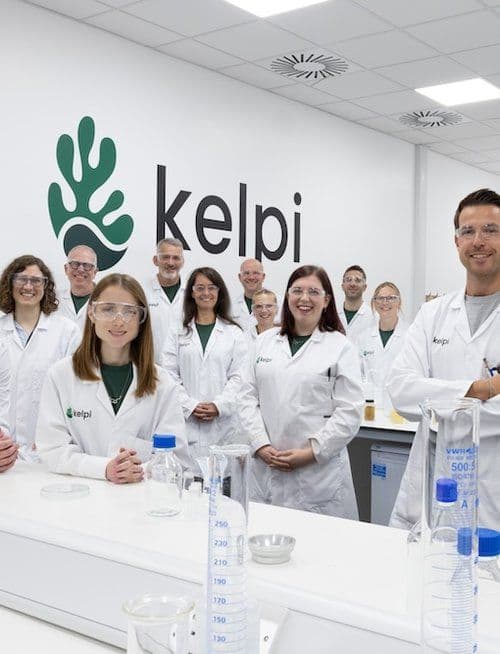
18. Nick Hazell- Founder & CEO, Algenie (Australia)
Nick Hazell is a veteran R&D innovator (ex-PepsiCo and Mars) who founded Algenie in 2023 in Sydney to crack the long-standing challenge of making algae a mainstream industrial resource. Previously known for co-founding plant-based meat startup v2food, Hazell turned his attention to algae’s unrealized promise. Algenie emerged from stealth boasting a novel thin-film photobioreactor technology that dramatically ups algae production efficiency. Hazell’s thesis: solve the physics of growing microalgae at scale and low cost – then algae can replace petrochemicals in everything from bioplastics and textiles to fuels. As CEO, he secured initial funding and academic partnerships (University of Technology Sydney) to refine Algenie’s reactors and algae strains. Hazell’s strategic and engineering chops are positioning Algenie to supply cheap algae feedstock that could feed into many material supply chains, potentially unleashing a wave of algae-based products.
Highlight Projects:
- Helix Photobioreactor: Algenie’s signature tech – a continuous helix-shaped algae growth system with thin layers of algae swirling under optimized LED light This design ensures each algal cell gets maximum light, enabling some species to double in mass every 2-3 hours. It’s a leap in productivity that could slash costs by 10x compared to traditional bioreactors.
- Carbon-Crude Algae: Using the above system, Algenie is working on producing algae strains rich in oils and biopolymers at a price per kilo nearing that of crude oil. This would make algae a cost-competitive input for bioplastic resin or sustainable aviation fuel.
- Licensing & Joint Ventures: Hazell intends to license Algenie’s reactor tech to partners (e.g., plastics manufacturers, aquaculture feed producers) and co-invest in large-scale algae farms, rather than Algenie trying to do it all in-house.
What Tocco loves: Hazell is tackling algae’s Achilles’ heel – its cost – with a bit of Aussie ingenuity and sci-fi engineering. Algenie’s reactors look like glowing green spirals of life, churning out algae so efficiently it might just outcompete oil. It’s the workhorse innovation quietly powering a host of algae dreams.
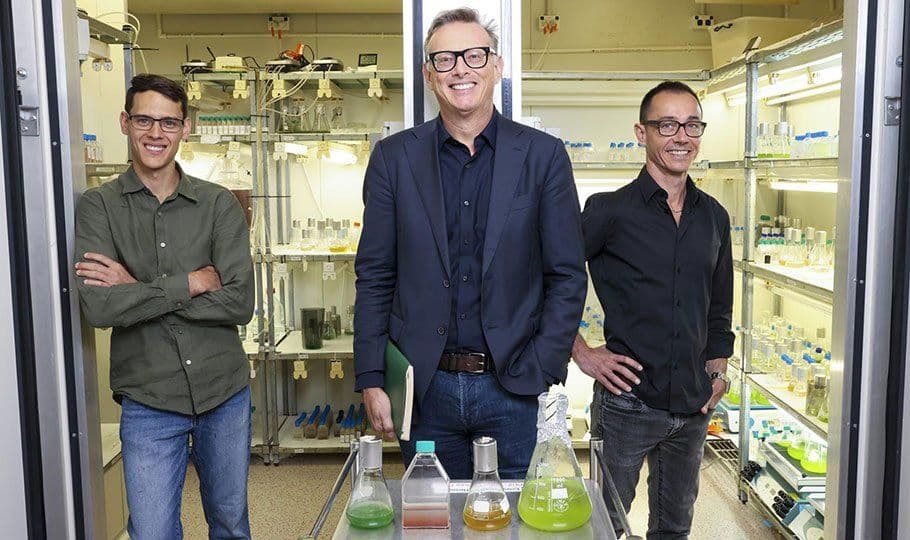
19. Philippe Michon- Co-Founder, Eranova (France)
Philippe Michon is the co-founder of Eranova, a French company turning problematic green algae blooms into bioplastic. Formed in 2016 and based in the south of France, Eranova was born when Michon – an engineer with experience in environmental industries – saw tons of rotting algae (ulva, or sea lettuce) being removed from Mediterranean beaches. He and his co-founders developed a method to collect that nuisance algae and extract starches and polymers to make biodegradable plastic granules. As General Manager, Michon has overseen Eranova’s scale-up, including the construction of a small industrial plant in 2021 capable of processing thousands of tons of algae into bioplastic raw material. Eranova’s SEArene bioplastic aims to replace PE and PP in products like packaging films and trash bags. Michon emphasizes that their feedstock doesn’t require new farming – they literally clean up algal waste and use it, tackling two environmental issues at once.
Highlight Projects:
- Green Algae Harvesting Program: Partnership with local municipalities to collect excess ulva algae from beaches (where it causes odor and ecological issues) and transport it to Eranova’s facility, effectively creating a supply chain from beach cleaning operations.
- SEArene Bioplastic Pellets: A family of resins developed by Eranova that include algae-based PE alternatives. These pellets can be blown into films or injection molded. Products made have similar look and feel to conventional plastic but are compostable.
- Somater Collaboration: Eranova teamed up with packaging company Somater to create a 100% seaweed-based cosmetic tube for creams, demonstrating the material’s viability in consumer packaging.
What Tocco loves: Eranova transforms slimy green beach algues – the smelly scourge of summer holidays – into green plastic gold. Michon’s work is elegant alchemy: yesterday’s algae sludge becomes tomorrow’s shopping bag, and coastlines get a breather in the process.
20. Pierre Paslier- Co-Founder & Co-CEO, Notpla (UK)
Pierre Paslier is an innovation design engineer who co-founded Notpla in 2014 after meeting co-founder Rodrigo García González at Imperial College London. Together they developed seaweed-based packaging, beginning with Ooho edible water capsules that gained fame for letting consumers drink the packaging. Paslier’s team has since expanded into Notpla Films, a home-compostable thin-film plastic alternative derived from brown algae and plants. Notpla’s mission is to make packaging “disappear” by harnessing nature’s designs – a vision Paslier cultivated while studying at the Royal College of Art’s Innovation Design Engineering program.
Highlight Projects:
- Ooho Edible Bubbles: Biodegradable sachets for water and liquids made from seaweed; trialed at the 2019 London Marathon.
- Notpla Coating: An algae-based coating for takeaway food boxes, used by Just Eat Takeaway to replace plastic liners.
- Notpla Film: A compostable film for packaging (e.g. garment polybags) that won the Tom Ford Plastic Innovation Prize.
What Tocco loves: Edible water orbs and dissolving films that leave nothing behind – Notpla’s creations are like nature’s own packaging, ephemeral yet effective.
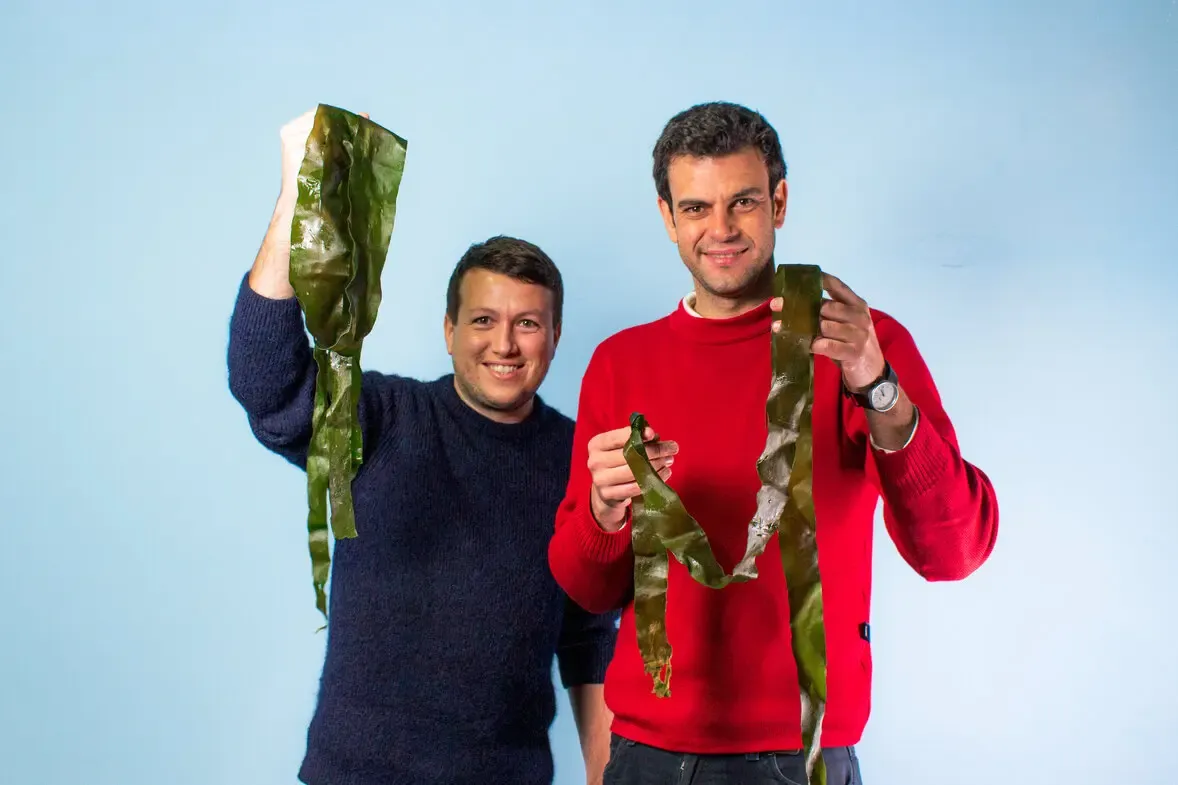
21. Ranah Chavoshi- Co-Founder & CEO, Phyco Technologies (Canada)
Ranah Chavoshi is a marine biologist and the entrepreneurial mind behind Phyco, a Canadian startup developing home-compostable bioplastics from local seaweed. While a graduate student at Simon Fraser University, Chavoshi combined her expertise in aquatic toxicology with a drive to solve plastic pollution, co-founding Phyco in 2021. She and co-founder Dr. Stacey Goldberg devised a way to use native Canadian kelp and invasive seaweeds as feedstock for a bioplastic that breaks down in weeks. As CEO, Chavoshi has been leading R&D on formulations that yield plastic-like performance (flexibility, strength) but which microbial enzymes can digest quickly after use. Phyco also partners with Indigenous communities on Vancouver Island to source kelp, reflecting Chavoshi’s commitment to social sustainability. In 2023, she won SFU’s Coast Capital Venture Prize for Phyco’s innovation, bolstering the startup’s momentum.
Highlight Projects:
- Seaweed Bioplastic Film: Phyco’s primary product is a thin film made from kelp extracts and other plant polymers, intended for food packaging. It’s opaque, flexible, and can decompose in a home compost within 4–6 weeks.
- Injection-Moldable Bioplastic: Ongoing development of a moldable composite using seaweed fibers and biopolymer binders, aimed at single-use cutlery and planter pots that can degrade into soil after use.
- Invasive Seaweed Pilot: A project to harvest invasive Japanese seaweed on the Pacific coast and turn it into Phyco’s plastic, thereby restoring habitats while creating material – Chavoshi’s team is running pilot trials now
What Tocco loves: Phyco’s bioplastic is as natural as the tide – sturdy when you need it, then melting back into the earth when you’re done. Chavoshi even turns pesky invasive seaweed into part of the solution. It’s alchemy with a Canadian twist: turning Pacific kelp into plastic gold.
22. Renana Krebs- Co-Founder & CEO, Algaeing (Israel)
Renana Krebs is the visionary behind Algaeing, an Israeli startup making algae-based dyes and textile fibres. After 15 years in the fashion industry, Krebs co-founded Algaeing (initially called Algalife) in 2016 with a mission to detoxify fashion. Harnessing microalgae and macroalgae, her company produces natural pigments and algae-cellulose blends that can color and form textiles without the toxic chemicals or heavy water use of conventional As CEO, Krebs has led Algaeing’s R&D in developing a liquid algae textile dye compatible with existing industrial equipment, as well as a fibre made by infusing algae into sustainable yarns. She emphasises that algae offers a triple-win: renewable inputs, closed-loop processing, and biodegradable outputs.
Highlight Projects:
- Algae Dye Packs: A proprietary algae-derived pigment that can be used to dye fabrics in vivid hues (from earthy greens to deep blues) with minimal water and no toxicity.
- BioFiber Collaboration: Algaeing’s partnership with a cellulose fibre producer to create an algae-infused fibre, demonstrated in knitted and woven prototypes that retain algae’s antimicrobial and UV-resistant properties.
- Algal Leather Alternative (R&D): Experimentation with algae polymers to create leather-like flexible sheets, pointing toward future “sea-leather” materials.
What Tocco loves: Krebs is literally dyeing with algae – turning the tides on toxic colorants. Think rich oceanic pigments saturating fabrics, all brewed from blooms instead of barrels.

23. Ryan Hunt- Co-Founder & CTO, Algix/Bloom (USA)
Ryan Hunt is a scientist-entrepreneur on a mission to turn pollution into products. As co-founder of Algix in 2010, he pioneered harvesting harmful algae blooms from waterways and converting them into useful biomaterials. Hunt’s team developed a process to extract algae biomass (often from nutrient-polluted lakes) and blend it with polymers to create Bloom™ Foam – the world’s first algae-based EVA foam. Today, as CTO of Algix, Hunt oversees R&D and collaboration with major brands to incorporate Bloom materials in consumer products. His work exemplifies regenerative innovation: cleaning water by removing excess algae, then upcycling it into everything from shoe soles to yoga. Hunt holds an MS in biochemical engineering, and his technical expertise underpins Algix’s patented algae-to-plastic technologies.
Highlight Projects:
- Bloom™ Foam: An algae-infused EVA foam used in millions of shoe soles, flip-flops, and surfboard traction pads – each pair of Bloom soles cleans 50 liters of water by removing algae
- Algix Solaplast Resins: A line of algae-plastic pellets (with up to 50% algae content) for injection molding, enabling durable products like phone cases and auto parts with a lower carbon footprint.
- Algae Filtration Systems: Custom pond filtration units that cultivate and harvest algae from wastewater, providing feedstock for Algix materials while purifying water.
What Tocco loves: Bloom Foam feels as cushiony and springy as conventional foam, but knowing it’s made from cleansed algae blooms makes every step feel like a win for the planet – literally walking on reclaimed water health.

24. Rémy Lucas-Founder, Algopack (France)
Rémy Lucas is a French innovator who has been working with seaweed as a plastic alternative for over a decade. He founded Algopack in 2010 in Brittany to harness the region’s bounty of brown algae for bioplastics. Trained in business with a passion for sustainability, Lucas saw potential in Laminaria seaweed as a feedstock for replacing petroleum polymers. Algopack’s patented process yields two products: AlgoPack, a 100% seaweed-based plastic, and AlgoBlend, a 50/50 algae-fossil plastic hybrid for easier processing. As CEO, Lucas has guided Algopack to create everything from compostable office supplies (pens, rulers) to food packaging, all with a signature greenish-brown hue from the seaweed. His early start and persistence have made Algopack a pioneer in algae biopolymers, inspiring a wave of newer startups.
Highlight Projects:
- Seaweed Granules: Algopack produces resin granules that manufacturers can use in standard plastic molds. AlgoPack granules fully biodegrade in soil within 12 weeks, while AlgoBlend granules (50% algae) cut plastic use and energy needs by 25%.
- Bioplastic Office Products: Demonstrator products like algae-based pen barrels, phone cases, and disposable tableware introduced at trade fairs to show durability and finish comparable to conventional plastic.
- Sargassum Bioplastic Project: An initiative to utilize invasive Sargassum seaweed from the Caribbean as a raw material, broadening Algopack’s sustainable sourcing and helping clean up algal blooms.
What Tocco loves: From Brittany’s rocky coast to your desktop, Algopack’s algae plastics bring a briny breeze to the mundane. The slight seaweed scent in a pen or notebook cover is the gentle reminder that it once grew in the Atlantic – plastic with a sense of place.
25. Scott Fulbright- Co-Founder & CEO, Living Ink (USA)
Dr. Scott Fulbright is a molecular biologist turned eco-printer, co-founder of Living Ink Technologies in Colorado. With a PhD in cell biology, Fulbright was inspired to replace petrochemical inks (which often use carbon black from fossil fuels) with a cleaner source: algae. In 2013 he teamed up with fellow CSU alum Steve Albers to found Living Ink. The company grows algae and transforms it into a rich, black pigment that can be formulated into printing inks and coatings. As CEO, Fulbright has seen his algae ink go from lab concept to commercial reality – it’s been used in printing packaging and even in a Nike collaboration. He often highlights that Living Ink’s products are renewable, non-toxic, and carbon-negative, since the algae feed on CO₂ before becoming pigment.
Highlight Projects:
- Algae Black™ Ink: A proprietary black ink derived from algae cells, offering a sustainable alternative to carbon black ink. Used in packaging, books, and apparel printing.
- Algae Paint & Coatings: R&D into algae-based pigments for paints and wood stains, extending the color palette (greens, blues from spirulina) for eco-friendly art and design materials.
- Nike “Move to Zero” Collab: Living Ink provided algae-black prints for Nike’s sustainable apparel line, proving performance at industrial scale.
What Tocco loves: Out of a bloom of microscopic algae, Fulbright conjures jet-black ink – as bold on the page as any petroleum ink, yet born of sunlight and CO₂. Each printed line whispers a story of carbon turned art.

26. Stephen Mayfield- Co-Founder & CEO, Algenesis (USA)
Dr. Stephen Mayfield is a renowned molecular biologist (UC San Diego professor) who co-founded Algenesis Materials to commercialize algae-based polyurethanes. Mayfield spent years engineering microalgae for biofuels and bioproducts; in 2016, he and colleagues pivoted to tackle plastic waste by creating a biodegradable PU foam from algae oil. As CEO of Algenesis, he led the development of the company’s Soleic™ foam, used for the world’s first algae-based flip-flops and shoes. Mayfield’s approach combines cutting-edge synthetic biology with practical product testing – he famously noted that 3 billion petroleum flip-flops are made annually, so even a niche dent in that market could have big impact. Under his guidance, Algenesis launched the Blueview brand of biodegradable shoes in 2022, proving that performance and end-of-life compostability can go hand in hand.
Highlight Projects:
- Soleic™ Foam: A polyurethane foam derived from algal oils that is soft, durable, and biodegrades in soil and compost. Used for midsoles and footbeds in footwear.
- Blueview Shoes: Lifestyle sneakers with 100% plant-based components, featuring Soleic foam soles and a eucalyptus fiber knit upper. Independent tests showed the soles biodegrade completely in compost, a world-first for shoes.
- Algae Surfboard Foam: An experimental algae-based rigid foam for surfboard cores, created with surfing scientists – it offers a cleaner ride and can break down in landfills unlike conventional PU boards.
What Tocco loves: Mayfield took the humble flip-flop – that emblem of carefree summer – and reinvented it from algae. Walk on a beach, leave only footprints (and maybe bits of biodegrading sandal feeding the microbes) – that’s the Algenesis ethos in action.
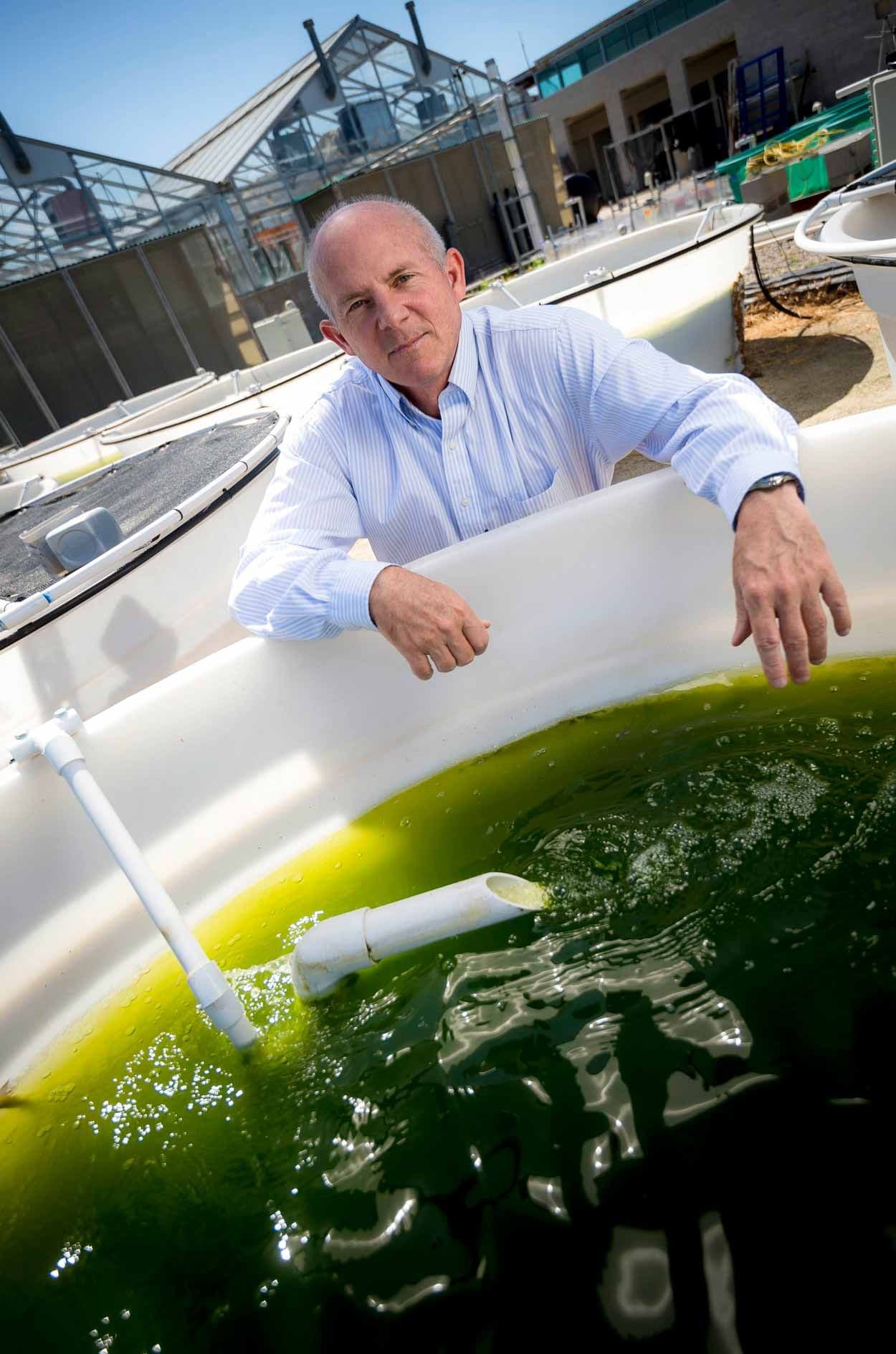
27. Aleks Gosiewski - Co-Founder & CEO, Keel Labs (USA)
Aleks Gosiewski leads Keel Labs (formerly AlgiKnit), a North Carolina-based startup she co-founded in 2017 to revolutionize textiles with kelp-derived yarn. She and her co-founders (Tessa Callaghan and Aaron Nesser) developed Kelsun™ yarn, a fibre spun from alginate (extracted from kelp) blended with renewable polymers. Now as CEO, Aleks is scaling this technology, positioning Keel Labs as a provider of biodegradable textile fibres that can plug into existing knitting and weaving machinery.
Highlight Projects:
- Kelsun™ Yarn: A seaweed-based yarn that is strong, elastic, and compostable – designed to replace petroleum-derived fibres in fashion and interiors.
- Fashion Prototypes: Collaborations with fashion brands to knit garments from AlgiKnit yarn, debuting kelp-woven apparel on runways to gauge performance and style.
- Textile Mill Trials: Pilot runs at textile mills to test large-scale spinning and dyeing of the kelp yarn, ensuring it meets industry standards for strength and washability.
What Tocco loves: Imagine a sweater from the sea – Keel Labs’ yarn knits into cozy fabrics that feel familiar, yet come from kelp forests. It’s like wearing a gentle ocean hug, minus the plastic.
28. Wil V. Srubar III-Co-Founder, Prometheus Materials (USA)
Dr. Wil Srubar is a professor and materials scientist who co-founded Prometheus Materials in 2021 to decarbonize construction through bio-based concrete. At the University of Colorado Boulder, Srubar led research into using cyanobacteria (microalgae) to grow limestone for cement. Prometheus Materials emerged from this research, with Srubar and three colleagues spinning out the company. The startup’s product, bio-cement, uses living algae in a process that mineralizes CO₂ into a cementitious material, which can replace Portland cement in concrete. As a scientific co-founder and advisor (the company’s initial CEO was appointed separately), Srubar drives the technical vision: a future where building materials are “grown” with biology and cured at ambient temperatures, eliminating the massive carbon footprint of traditional cement. Prometheus has already made algae-based concrete masonry units (CMUs) that meet structural requirements.
Highlight Projects:
- BioLimestone™ Cement: A carbon-negative cement produced by combining photosynthetic algae, sunlight, water, and nutrients to precipitate calcium carbonate (limestone) in a controlled environment. This bio-cement can be used as a one-to-one substitute for clinker in concrete mixes.
- Living Concrete Blocks: Prototype green bricks/blocks made with BioLimestone™, showcased in partnership with architects. They have comparable compressive strength to conventional concrete blocks but are made at room temperature, with 80% lower CO₂ emissions.
- Facade Panels: Development of decorative, self-healing facade panels that incorporate live algae which continue to absorb CO₂ and heal micro-cracks over time – pushing the envelope of “living building” materials (inspired by Srubar’s lab experiments).
What Tocco loves: Srubar’s concrete grows like coral – imagine a future where building a house is more like farming than manufacturing. Prometheus’s algae-cement bricks are literally green (with a pale seafoam tint) and imbued with the radical idea that even our cities can be part of the carbon cycle, not the carbon problem.
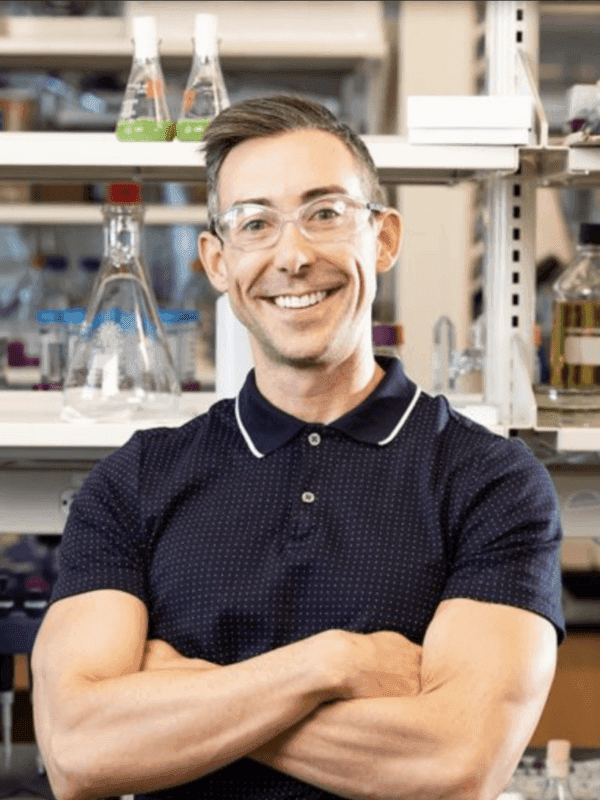
---
Join the League.
What’s driving material decisions behind the scenes? Beyond the showrooms and strategy decks, Tocco believes the future is being shaped by those who touch the materials themselves—and those who dare to rethink them.
That’s why we created UNBOX: the world’s first portable material library for these pioneers. It’s our tactile research tool disguised as a product—a curated selection of next-gen materials from the world’s most promising innovators, packed into a portable format for designers, educators, and creators.
Check out UNBOX project here.








